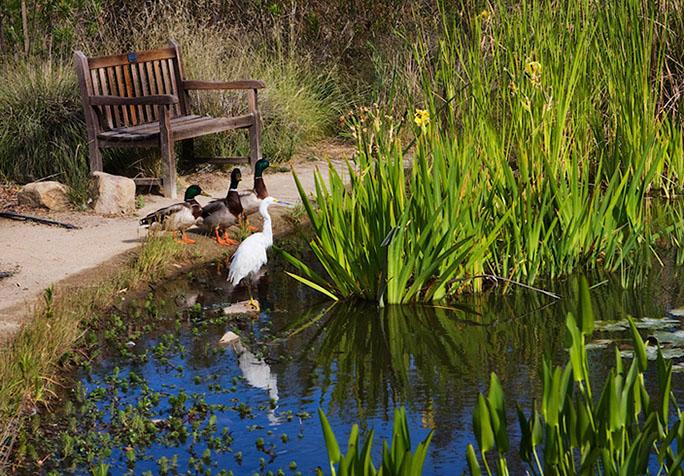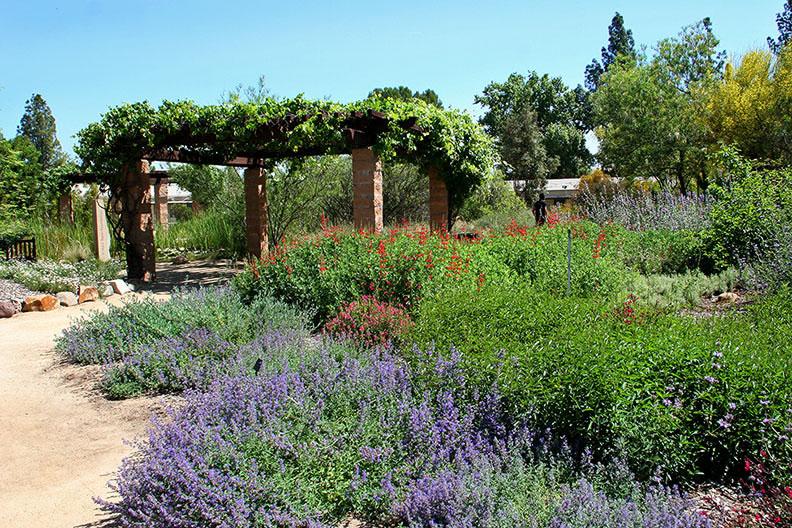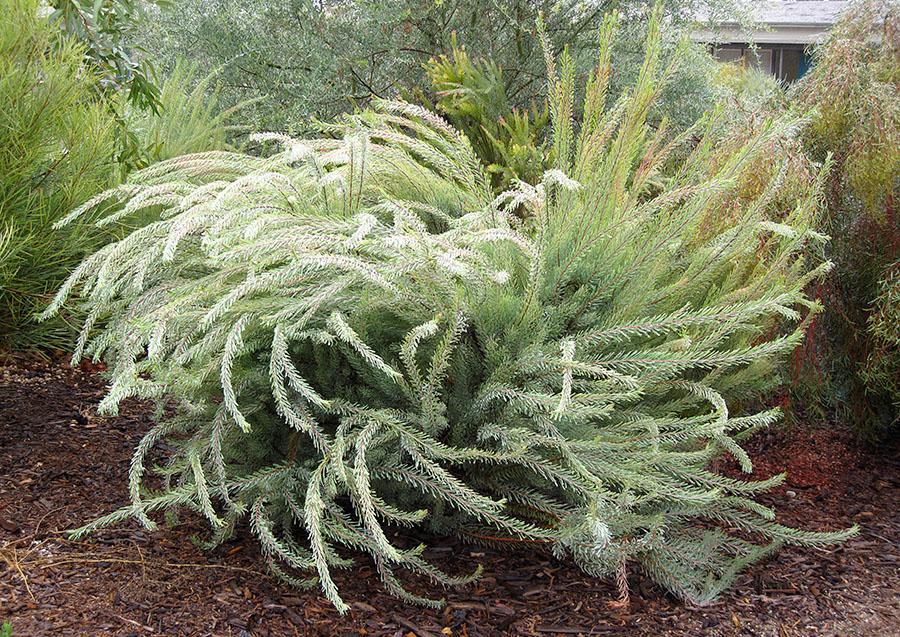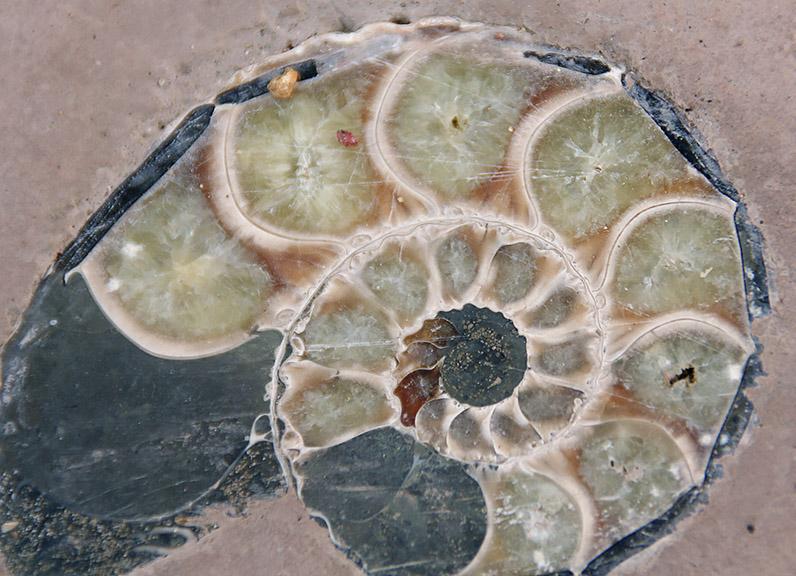HONOREE
S. Mark Taper Foundation Life Science Botanical Garden
The botanical garden, as described by Dr. James Rikel, chairman of the Pierce Life Sciences Department in 2009, is "an outdoor lab primarily designed to show how plants adapt their leaves to the arid environment we live in."
It is so much more.
Eight years in the making, the S. Mark Taper Foundation Life Science Botanic Garden, located in the center of campus east of the Mall, has been a labor of love, sweat and tears. Under the direction of Pierce Life Science Professors Pat Farris, Kate Kubach and James Rikel, the college has accomplished several goals:
- Building an outdoor botanical laboratory for our biology students
- Demonstrating how incorporating plants from around the world, like those from Australia, in our local gardens can decrease our dependence on water
- Exhibiting the beauty and viability of these drought-tolerant plants
Once asked when the garden would be complete, Rikel responded, "Never. It will continue to evolve."
What has evolved so far is a vast array of animal and plant life. There are trees and cactuses, flowers and bushes, grapevines trellising the central pergola. A stroll through the area reveals coastal redwoods, Catalina cherries and olives, red mountain sage, golden barrel cactus, a butterfly bush, a mother-of-pearl plant, a Tasmanian flax lily, a pink spider flower, San Miguel Island buckwheat, a kangaroo paw and a creeping boobialla.

There are hummingbirds, hawks, egrets, ducks, squirrels, cottontail rabbits, frogs, lizards, mosquitofish and turtles. All manner of butterflies and birds alight, with crows, Killdeer and mockingbirds among the noisiest inhabitants in this magical landscape.
It's not surprising that bird-attracting plants, including 28 species of Salvias, were thoughtfully chosen and planted. This sanctuary has more than 600 species of drought-tolerant plants and requires about 70 percent less water than the lawn that used to occupy the two-acre site. It brings students closer to nature and provides a welcome respite from classes and exams, plus a natural outdoor lunch locale.
THE BEGINNING
In the waning days of 1999, Life Sciences Professor Pat Farris approached Rikel with the idea to create a native plant garden in a corner outside her classroom. What followed was nearly a decade of planning, prospecting, perspiration and planting that resulted in the magnificent two-acre S. Mark Taper Foundation Life Science Botanic Garden at Pierce College.
Rikel approached Pierce College's president at the time, Rocky Young, who looked at the dry expanse of lawn in the center of a quad of classrooms and said, "Heck, you can have the whole thing." Kate Kubach, another life sciences professor and Rikel's wife, joined to form an unstoppable trio who provided the knowledge, inspiration, labor and dedication to bring a Mediterranean garden in the middle of the college to life.
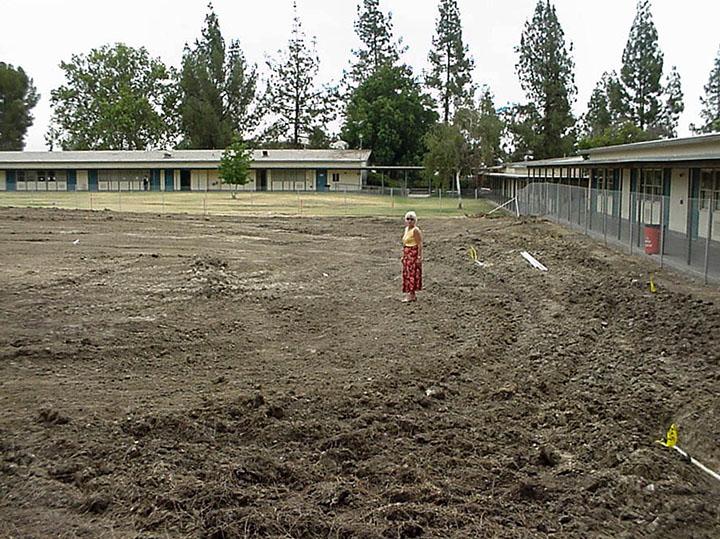
Drought-tolerant plants from seven regions around the world, including Australia and South Africa, were brought in. Hardscape was installed along with a unique pathway called the "Evolution Walk," a concrete path marked with fossil images that represent a million years in the evolutionary process.
The garden would be built in two phases between 2002 and 2007. The first half, on the west side, included a 2,500-square-foot pond, sculptural fountain, bird habitat and California native plants. The second phase was to demonstrate plants from Australia, a climate similar to California.
With the help of the Foundation for Pierce College, funding was sought and granted from the S. Mark Taper Foundation to complete Phase I. Phase II was funded in part by a Proposition A/AA voter bond program and a $75,000 donation from the Los Angeles Metropolitan Water District.
The team of professors worked with landscape architects to design the main elements of the garden, emphasizing that it should serve as a peaceful environment for students and the public, a habitat for small wildlife and an outdoor laboratory for biology courses.

PHASE I
The official groundbreaking took place on March 15, 2002, at 10:00 a.m. on the bare site of the future garden.
In the first phase, soil from the equestrian area was brought in. The contouring and water-saving drip irrigation system was installed through private donations. Planting of hundreds of plants was done entirely by the team of Rikel, Kubach and Farris, with the help of many student and faculty volunteers. The pond went in.
The completion of Phase I on Oct. 10, 2003, pictured, was celebrated by about 80 college employees, donors, friends and Los Angeles Community College District board member at a ceremony by the pond, unveiling the stone pillar sign of its major donor, the S. Mark Taper Foundation.
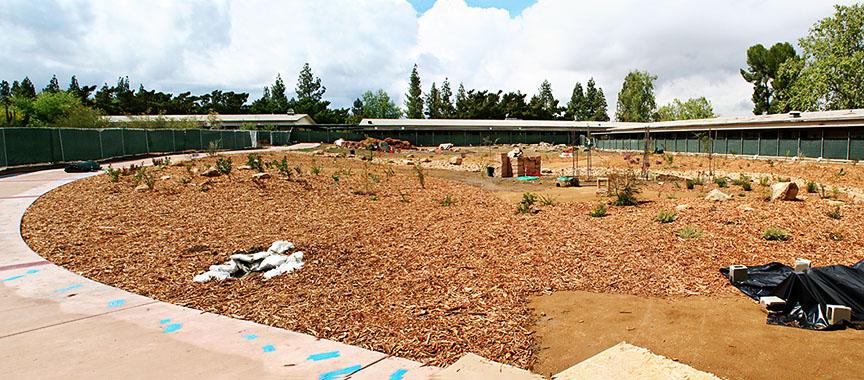
PHASE II
The second phase broke ground with a ceremony on Dec. 8, 2006 and features an array of Mediterranean plants, including Australian and South African-native shrubs. It is an ever-changing scenario of life and growth.
Phase II is a major expansion spanning 47,700 of the 80,300 square-foot garden, with a variety of native Australian plants, including a rare Wollemi pine, once thought to be extinct. Sustainable Mediterranean plants, a rocky dry creek bed, three new shade structures, and benches throughout join the winding Evolution Walk. Hardscaping such as patios and seat walls, irrigation, boulders and signage were also provided as part of Phase II.
New in this phase is the Evolution Walk curving through the middle, depicting the major evolutionary time periods with representative fossil images stamped into the walkway every six inches. It separates Phase I, with its drought-resistant Southern California native plants, pond and fountain, from Phase II. The garden has more than 600 species of drought-tolerant plants and requires about 70% less water than the lawn that preceded it.
With Phase II installed, the Valley now boasts one of the finest collections of drought-resistant plants in the region in an enchanted oasis that is the S. Mark Taper Foundation Life Science Botanic Garden.
The completion of Phase II was celebrated by 120 guests carrying colorful parasols under the sun on Sept. 14, 2007. It marked the official opening of Pierce College's sustainable "living classroom."
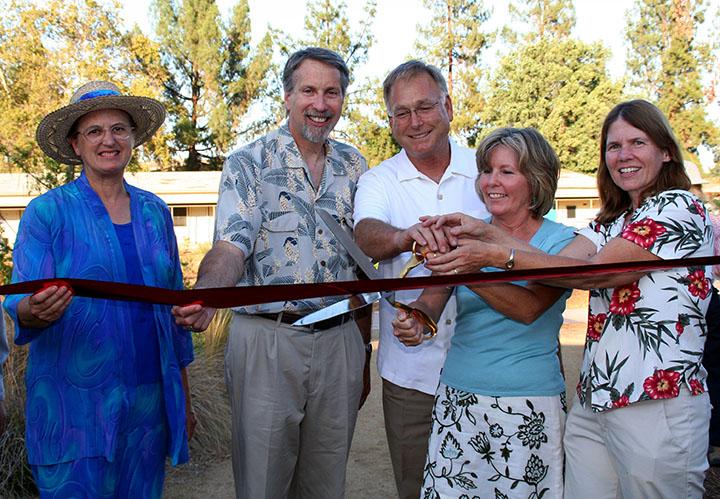
The building and naming of the S. Mark Taper Foundation Life Science Garden was approved by the Trustees of the Los Angeles Community College District Board on 4/17/2002.

